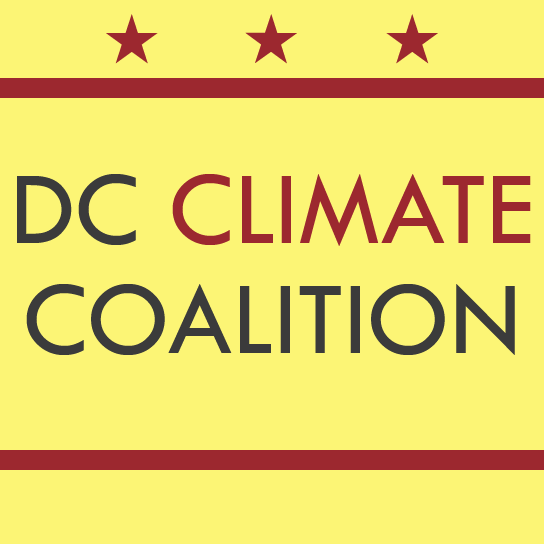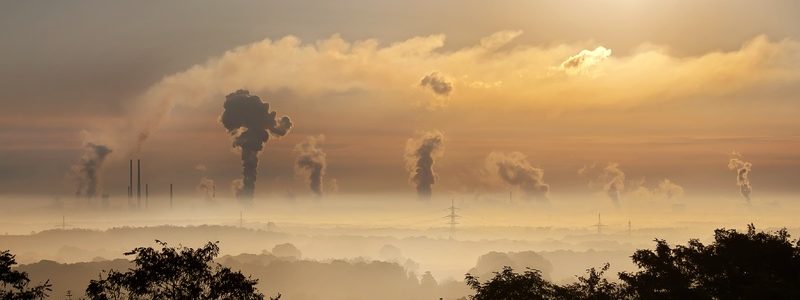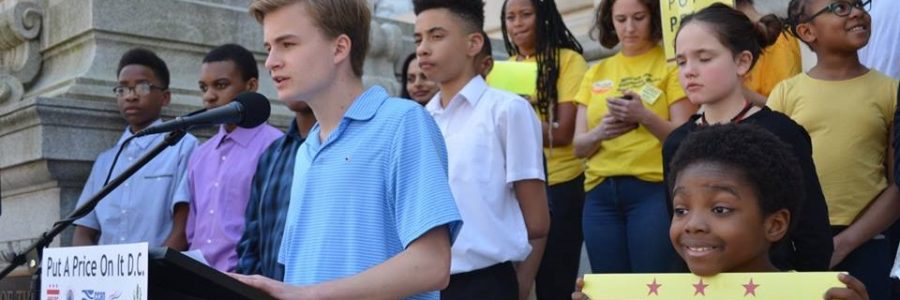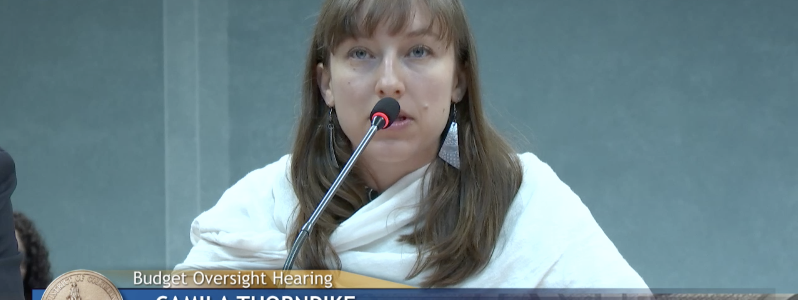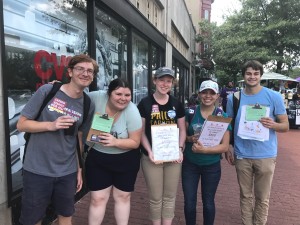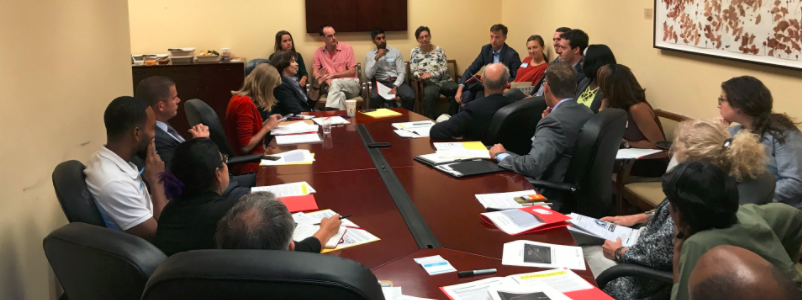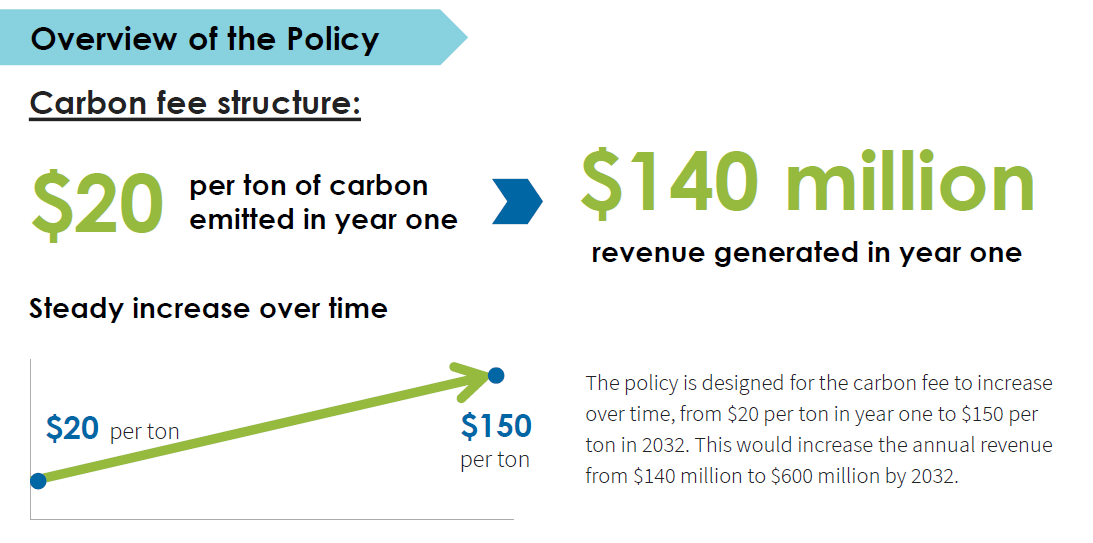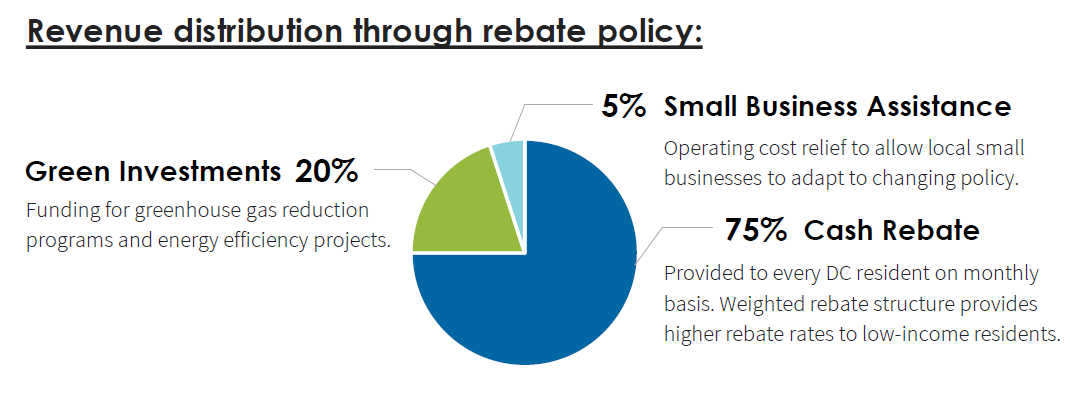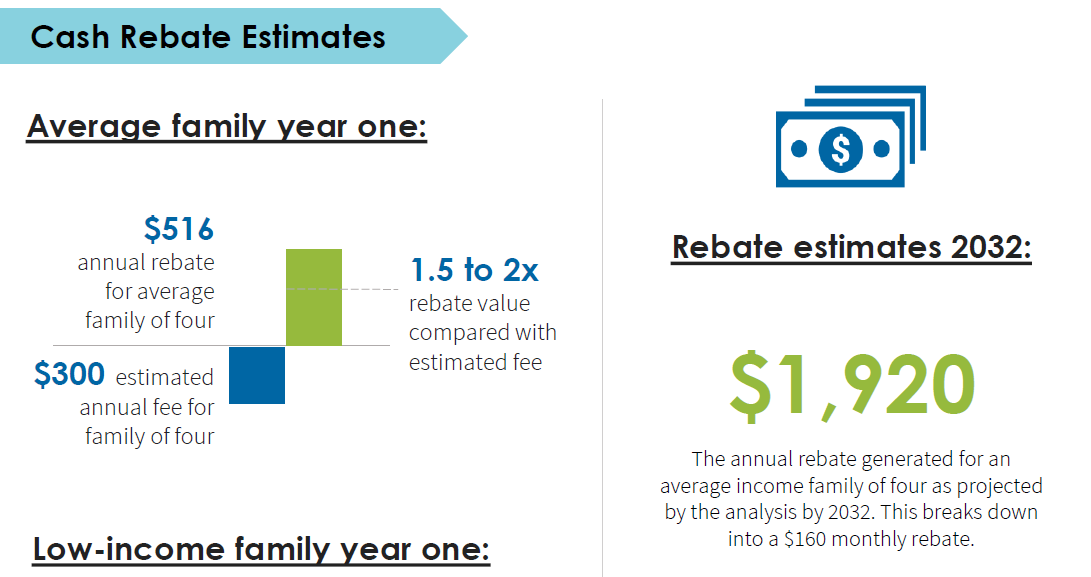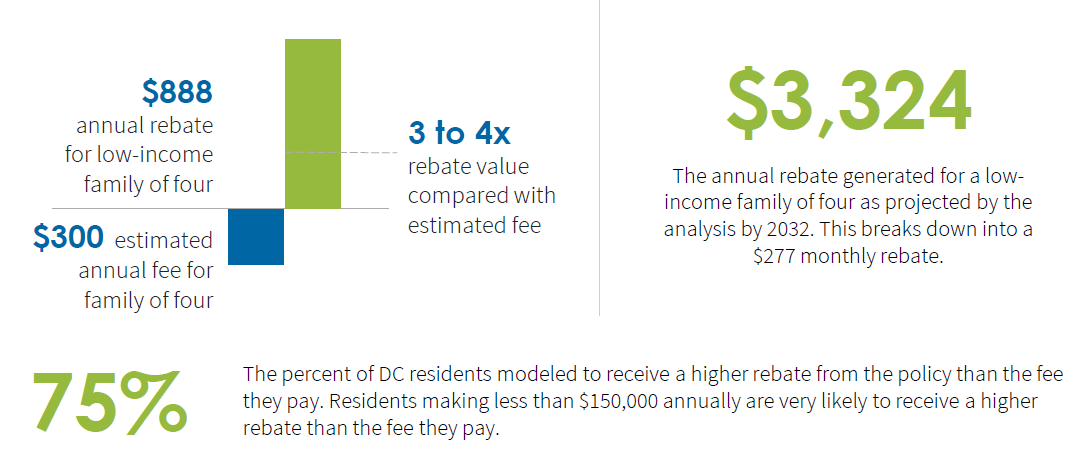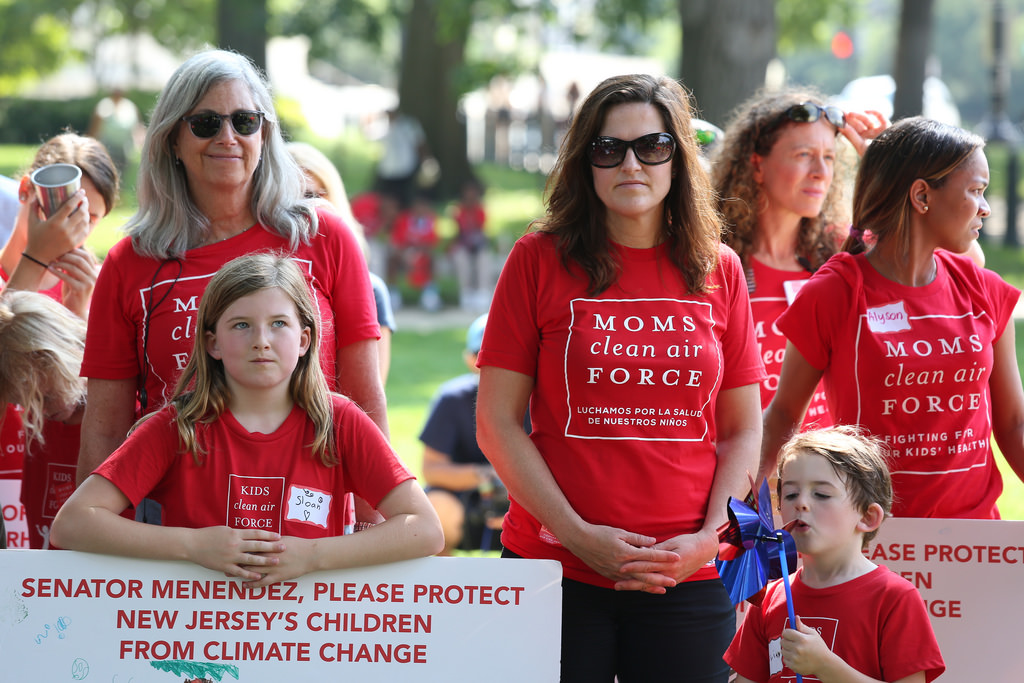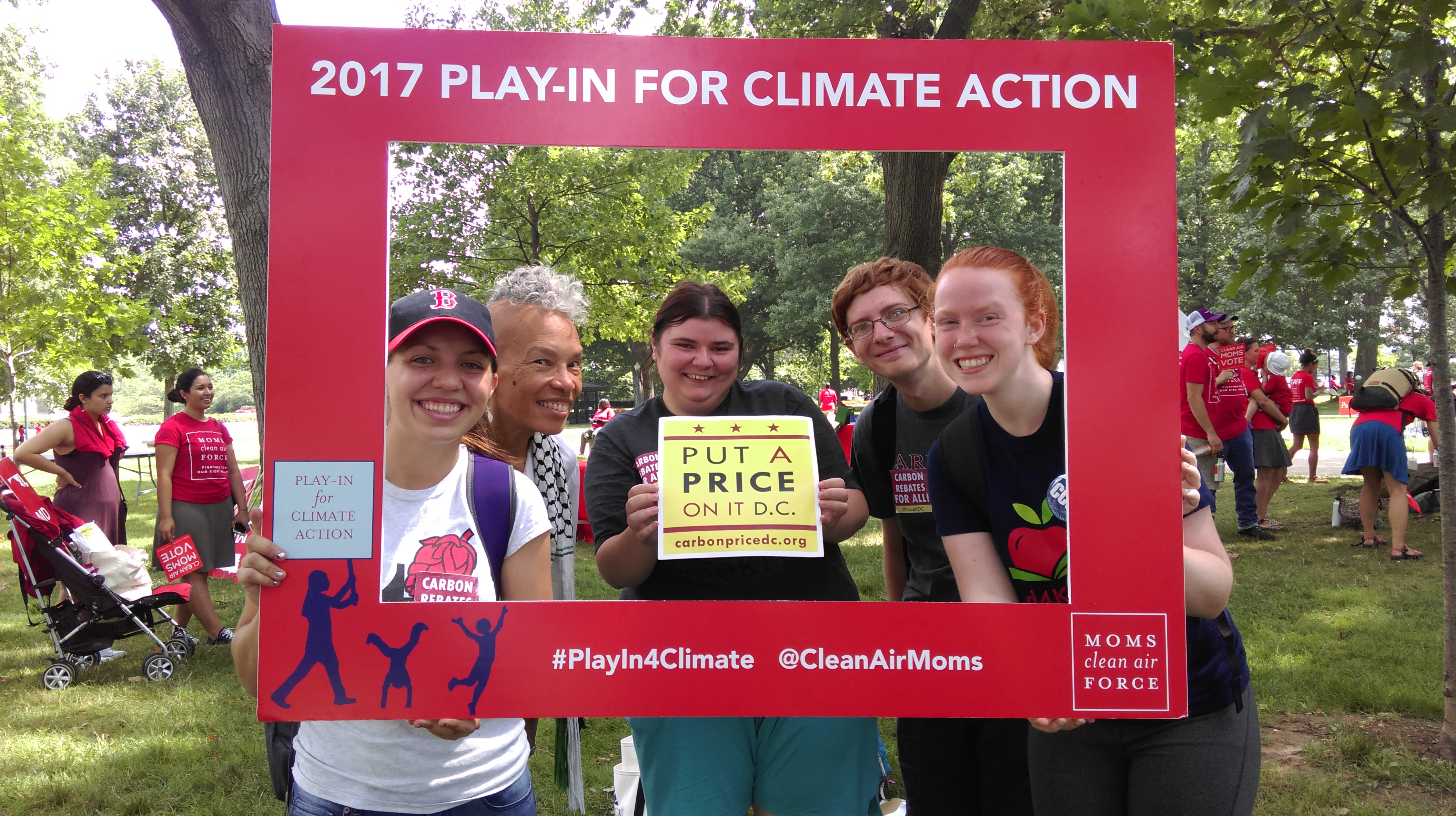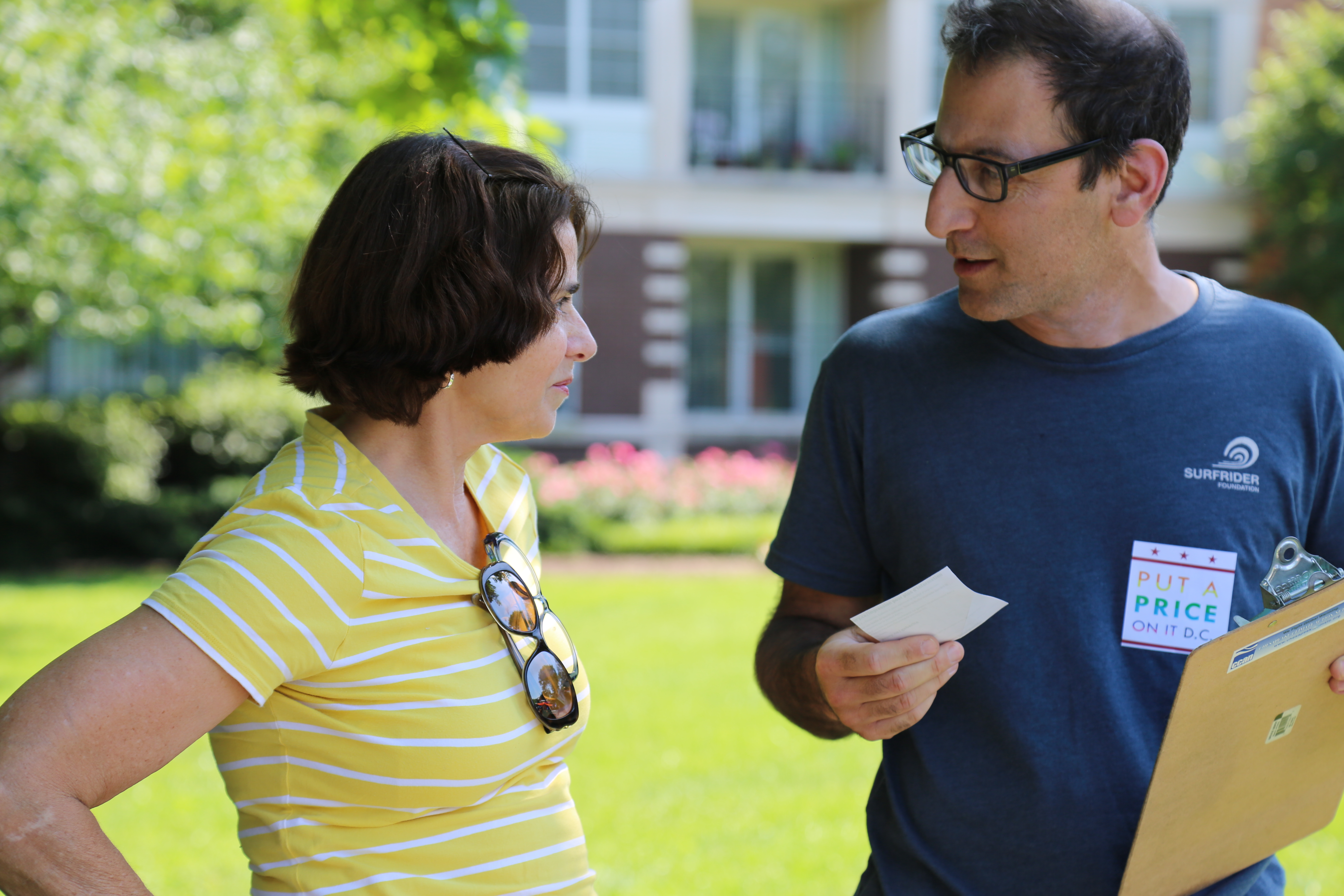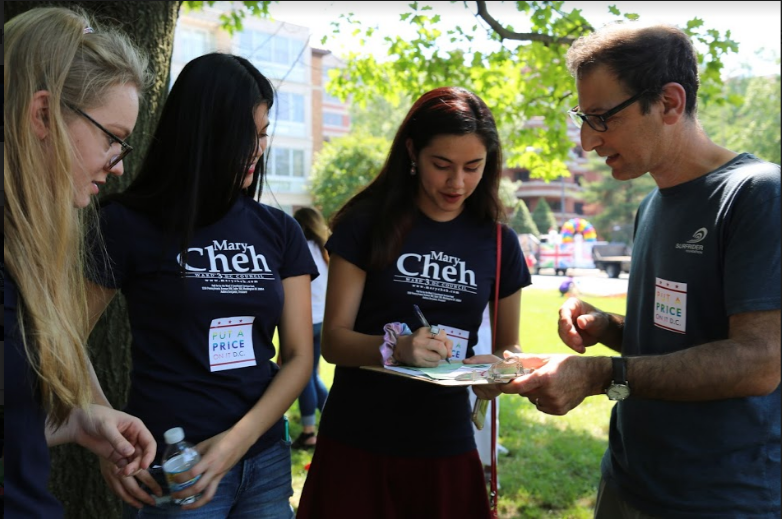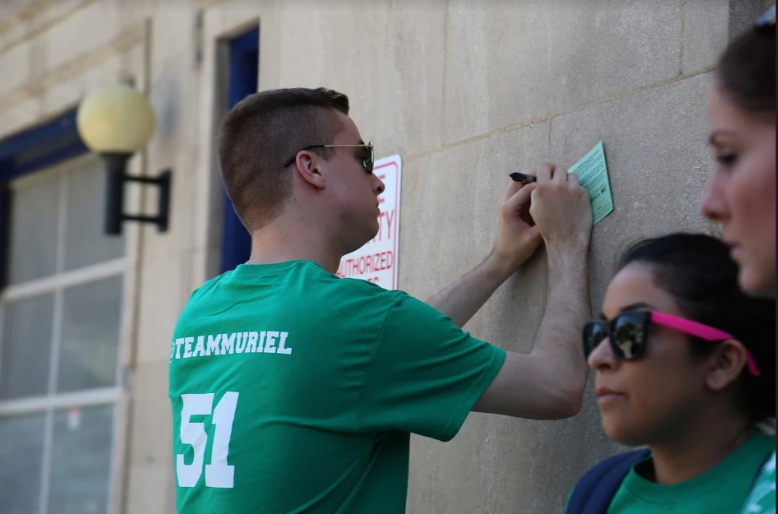By Courtney Dyson
We just achieved a key milestone in the carbon price campaign. On May 18th Councilmember Mary Cheh finally presented a draft proposal for a carbon price in DC!
The proposal comes on the heels of the DC Council introducing a bill requiring 100% of the District’s electricity to come from renewable sources by 2050. Councilmember Cheh’s proposal brings us one step closer to enacting a strong and fair carbon fee-and-rebate policy, and we are grateful for her leadership.
However, it must be strengthened before being introduced and passed into law.
The proposal is still in draft form, so specific allocations of the revenue raised in this proposal will undoubtedly change. At this time, we are focusing on the effectiveness of the proposal in terms of reducing fossil fuel emissions. The Councilmember’s current draft cuts in half the most important numbers: the level of the carbon price itself, the economy-wide coverage, and the emission reductions that follow.
The Carbon Price
With a fee starting at only $10 per ton of carbon dioxide, Councilmember Cheh’s proposal falls along the lines of many others being implemented around the globe. And akin to those, it is not enough.
The recommended carbon price to meet the high end of the Paris Agreement (2.5 degree Celsius warming) is $230 per ton of CO2 in 2020. A higher carbon price is cited as being needed to hasten the transition to clean renewable energy sources and to improve energy efficiency. Our proposal calls for a fee that begins at $20 per ton and increases $10 per year, to eventually reach $150 per ton by 2032.
Economy-wide Coverage
One of the leading differences between the two proposals is that Councilmember Cheh’s would only place a carbon fee on oil and gas combustion. It completely omits the electricity sector from paying a fee.
Fossil fuels are a main source of energy for electricity generation in the district. In order to ensure a swift transition to clean energy across the economy, it would be more effective to apply a carbon price across all sectors, rather than segmenting them with different policies like an RPS. Under the coalition proposal, the electricity sector would decarbonize decades faster than under Councilmember Cheh’s.
Emission Reductions
DC has the goal to reduce greenhouse gas emissions by 50 percent by 2032, and the coalition proposal would put us on track to achieve those goals.
However, Councilmember Cheh’s proposal cuts the carbon price in half and lessens its scope, inevitably diminishing emission reductions.
The Put A Price On It DC proposal reduces CO2 emissions from natural gas and oil by 5.75 million tons by 2032 (not including the emissions reductions from electricity), whereas Councilmember Cheh’s proposal only reduces it by 2.65 million tons by 2038.
We cannot afford to let that mass of greenhouse gas emissions escape into our atmosphere. We are on the brink and every ton of CO2 emitted into our atmosphere counts.
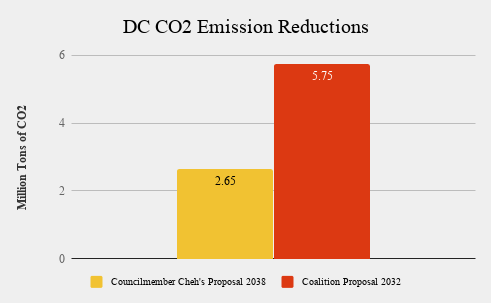
What does this mean for our campaign
We’re going to work closely with Councilmember Cheh to mold this proposal into an equitable carbon pricing policy that catalyzes reductions in greenhouse gas emissions, encourages innovation and clean renewable energy, and is fair to all DC residents.
There are still many factors of this proposal to be determined and we must keep up the pressure to ensure a rebate to ratepayers, the details of which are still to be determined by a commission.
On June 5th we will be having a press conference to urge our councilmembers to continue making progress on a fair and equitable carbon price and to push for the bill to be introduced.
In the meantime, you can send a message to Council Chairman Phil Mendelson expressing your support for a strong and fair carbon price today.
Read on for more details comparing our proposal with Councilmember Cheh’s proposal.
AT A GLANCE: COMPARISON OF PROPOSALS
| Feature | Councilmember Cheh’s Proposal | Coalition Proposal |
| Fee Rate | Taxes carbon at a rate of $10 per ton starting in FY2020
Price of carbon increases $5 per year per ton of CO2 Price of carbon capped at $100 per ton in 2038 |
Taxes carbon at a rate of $20 per ton starting in FY2019
Price of carbon increases $10 per year per ton of CO2 Price of carbon capped at $150 per ton in 2032 |
| Electricity Sector | 100% RPS by 2050, plus long-term Renewable Power Purchase Agreement (PPA) for Standard Offer Service
Per the CleanEnergy DC plan, limit the area from which RECs may be purchased for compliance with the RPS to the PJM |
Fee applies to electricity at same rate as other sectors, which increases efficiencies.
See analysis below on necessary amendments to any proposed 100% RPS. |
| Gasoline & Diesel | Carbon fee would be implemented when one adjacent state adopted a similar fee | Same |
| Transportation | -Vehicle excise tax tied to emissions standards, exemption for used cars 7 or more years old
-Additional fee on parking |
Same |
| Green Finance Fund | The first $30 million raised would go to the Green Finance Authority, after that the Green Bank would receive $10 million per year for 4 years | 20% of the revenue is directed to greenhouse gas reduction programs, with a focus on energy efficiency and supporting greener buildings, as well as the installation or retrofit of HVAC and other large building systems. |
| Resident Rebates | $X million per year for low-to-moderate income residential carbon fee offset, the details of which would be decided by a commission appointed by the Mayor and the Council in accordance with guiding principles established by the bill, to include:
|
75% of revenue rebated to all residents, with an enhanced rebate for residents below 200% the federal poverty level.
See below for principles to which a commission must adhere. We are concerned that Cheh’s currently proposed $10/ton starting price with $30M allocated for the Green Bank would leave zero revenue for any other purpose, including the rebate. |
| Business Rebates | $X million per year to the SEU and/or Green Finance Authority for programs assisting master-metered multi-family building owners with energy efficiency retrofits
$X million per year for a tax deduction for energy efficiency retrofits in commercial buildings |
Under the Coalition proposal, 5% of the revenue is directed toward operating-cost relief for small businesses.
The Coalition asks that CM Cheh’s proposal specify that funds appropriated to the Green Finance Authority and/or SEU, master-metered units, and commercial tax credits can be used for both energy efficiency AND for investments in building electrification (switching from gas/oil to electric space/water heating and cooking). The proposal should also specify where money goes from either parking fees or a fee on motor fuels if a neighboring jurisdiction acts. |
Further analysis from the coalition:
On Necessary Amendments to the RPS
We applaud Councilmember Cheh’s proposal to restrict the catchment area for qualifying RECs under the RPS to the PJM alone, as well as her proposal to require 70% of the SOS be procured by long-term renewable PPAs. However, the Coalition proposal seeks far larger reductions from a comprehensive carbon price on electricity.
In short, a 100% by 2050 RPS policy will not help the District achieve its 2032 climate and energy goals. This approach leaves 80% of electricity unaffected now, and does not strengthen our existing efforts to decarbonize as mandated by the 50% by 2032 RPS. If the Council is intent on reducing electricity emissions via a new RPS, the target date must be significantly sooner.
The design of the current 50% by 2032 RPS presents another opportunity for increased emission reductions. There need be no three-year pause beginning in 2020, when clean energy will comprise 20% of the electricity mix. Instead, the RPS could reach 30% by 2023 and exceed 50% by 2032.
Proposed Rebate Commission Must Adhere to Specific Principles
In order to better detail the specifics of residential energy use compensation, the Coalition is supportive of a bill that would allocate 75% of revenue to residential rebates, and appoint a commission specifically to determine the technical aspects of its distribution. (The current revenue allocation to the Green Bank in initial years is out of proportion and should be adjusted).
The commission should include members representing environmental and environmental justice organizations; low-income advocacy organizations; unions; the Office of the People’s Counsel; applicable agencies; and other members with relevant expertise. The commission should report back to the Council within six months of beginning work, but at the very latest no longer than twelve months after beginning work.
The bill language must require the commission to adhere to the following principles:
- The economic outcome must be progressive for the majority of DC households. Households who contribute least to the climate crisis — specifically low-and middle-income households — should not pay more in a carbon fee than they receive in compensation.
- The price signal and the revenue must be decoupled. In other words, no one should receive revenue back at the same time that they pay the carbon fee (e.g. on-bill).
- The price path should be unchanged from our original proposal of $20/ton in year one, increasing $10 every year to a cap of $150/ton.
The Coalition continues to believe that rebating 75% of the money to District residents in the form of monthly checks or deposits is the best use of the funds. If needed, however, we are open to a diverse commission of experts determining the specific allocation of these funds, as long as the solution is timely and adheres to the principles described above.
